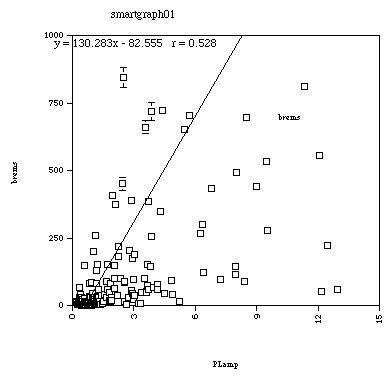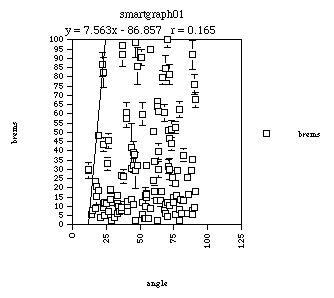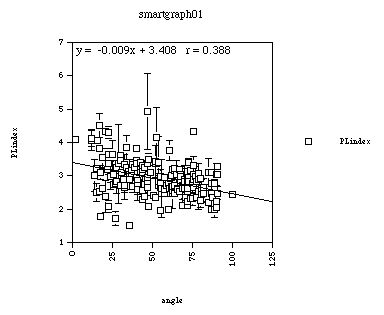This scatter plot shows that there is no real correlation between the duration (in seconds) of the solar flares and how much hard radiation is given off.
During a solar flare in various chemical reactions, positrons (anti-matter) and electrons annhilate each other, producing .511MeV's of energy each. At the same time, when neutrons are captured by other atoms, a gamma-ray is produced releasing 2.23MeV's of energy. This graph show a clear positive correlation between the two reactions.

In this plot, a general positive correlation between the Power Law Amplitude ("brightness") of the flare and the softer radiation given off ("Bremsstrahlung fluence") is seen. It is not a rule, though, shown by the outliers in the upper left and lower right hand corners.

This plot shows that the radiation emissions of solar flares are not isotropic. As viewed from Earth, the greater heliotropic angles of the flare place it farther to the side of the solar disk. However, the amount of radiation that reaches Earth is not affected, meaning that the softer radiation emissions are not focused in one direction.

The harded radiation emissions are affected by the heliotropic angle, however, reaching Earth more when the angle is greater (the Power Law Index measurements are shown as the absolute values). This implies that the harder radiation is released more at the sides of the flares, rather than being released equally in all directions.